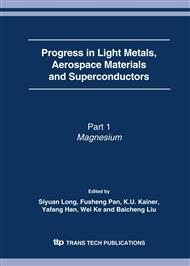p.1065
p.1069
p.1077
p.1081
p.1087
p.1093
p.1111
p.1117
p.1123
Flow Field and Gas-Bubble Size Analysis in Water Model for the Process of Aluminum Melt Degassing by Particle Image Velocimetry
Abstract:
The flow field and gas-bubble size during the process of aluminum melt degassing were investigated in water model. A Φ400mm×400mm transparent water model and an impellor degassing device were used in this study. The instantaneous velocity fields of water and bubbles under the mixture of rotary injector were measured with PIV velocity field measurement technique. Then the pictures of bubbles gained from PIV were analyzed with software to get the bubble size distribution. The results showed that bubble flow field and bubble size were influenced by rotary speed of rotor and gas flow-rate. With the increase of rotary speed of rotor, the horizontal velocity components of bubbles became larger, the stagnant time of bubbles in water increaseed correspondingly and bubble size became smaller. With the increase of gas flow-rate, the longitudinal velocity components of bubbles became larger, the stagnant time of bubbles in water decreased correspondingly, and the bubble size became larger also.
Info:
Periodical:
Pages:
1087-1092
Citation:
Online since:
May 2007
Authors:
Keywords:
Price:
Сopyright:
© 2007 Trans Tech Publications Ltd. All Rights Reserved
Share:
Citation:


